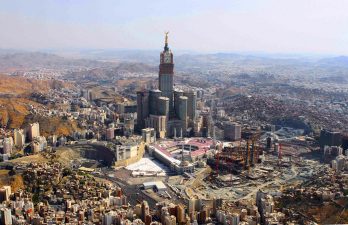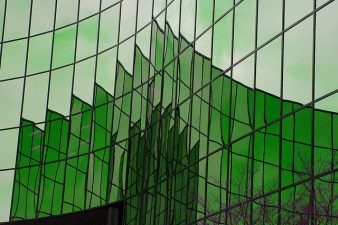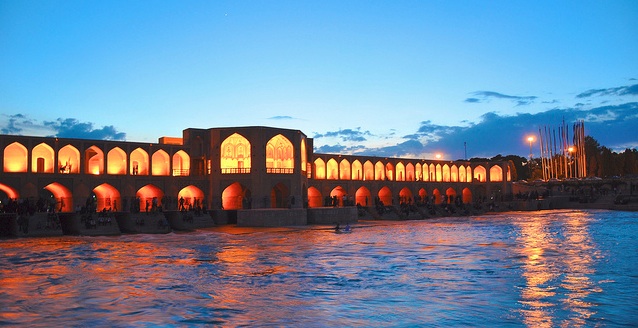 Built by the the Safavid Dynasty in the 1650s as a dam and a bridge, Mehrdad asks how the Khaju (or Khajoo) Bridge in Iran can be restored more sustainably.
Built by the the Safavid Dynasty in the 1650s as a dam and a bridge, Mehrdad asks how the Khaju (or Khajoo) Bridge in Iran can be restored more sustainably.
Eventually all historical monuments and treasures will need preservation and renovation, like the Grand Bazaar in Tehran, but this should always be done with regards to the original aesthetics, sound engineering and sustainability practices in mind. In some cases it has been observed that poor renovation can cause bad reputation for a monument or even cause damage to some parts of it. This is exactly what happened to the Babylon Palace in the time of governance of Saddam Hossein in Iraq.
An Iranian example of this phenomenon is the renovation of Khajoo Bridge in Esfahan, a city about 340 km south of Tehran. The renovation was started in 2009 by the Iranian Organization of Cultural Heritage and it is still going on. Some experts and cultural activists believe that the method of the renovation can cause serious damage to the structure of the bridge in the long run. The work is being done using of cement instead of the original lime, which was used between the stones in the historic construction. The use of cement is in definite contrast to the sustainable restoration of the monument that was built by natural materials.
Construction of the Khajoo Bridge by the Safavids
Located in center of Iran, Esfahan (also spelled Isfahan in English) has had a brilliant era in the age of the Safavid dynasty in 16th and 17th centuries. At that time, after Esfahan was selected as the capital city of Iran, some structures were added to the city to promote the reputation and fame of the capital city of the empire. Khajoo Bridge was one of these constructions, which was built by Shah Abbas II in 1650.
From Wikipedia:
The Safavids (Persian: صفویان; Kurdish: سەفەوییەکان,Sefewî; Azerbaijani: صفویلر; Georgian: სეფიანთა დინასტია) were one of the most significant ruling dynasties of Iran. They ruled the greatest Iranian empire since the Islamic conquest of Persia and established the Ithnāˤashari (Twelver) school of Shi’a Islam as the official religion of their empire, marking one of the most important turning points in the history of Islam. This Shia dynasty was of mixed ancestry (Kurdish, Azerbaijani, Georgian, Greek) and ruled Iran from 1501/1502 to 1722.
It was built as both dam and bridge. With a length of 150 meters and width of 14 meters, it includes a walkway of the deck that has a width of 6 meters. This way is still used by pedestrians.
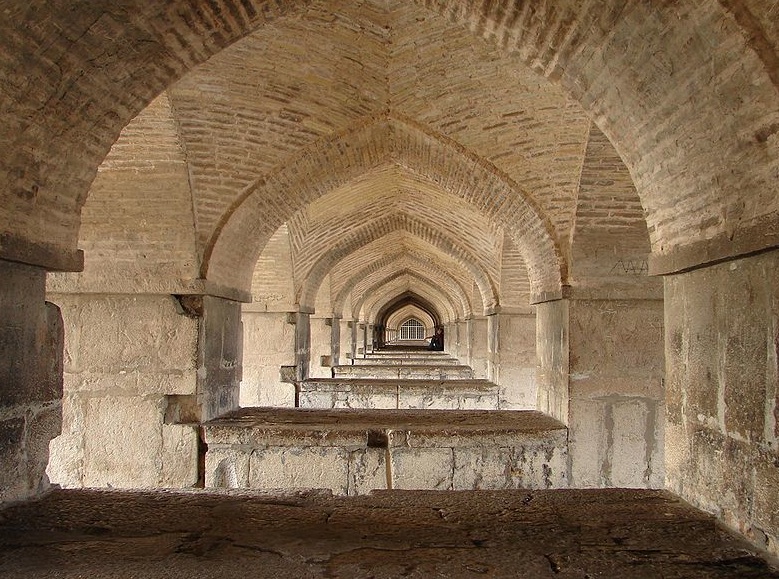 Under the Khaju Bridge.
Under the Khaju Bridge.
The water passes through the bridge along 26 paths. Between the water paths, there are 51 room-like spaces on each side of the bridge (see below image). These spaces are still used by people and tourists to enjoy the river and the landscape. Three hundred and fifty years ago, these rooms were given to local governors during the ceremonies to settle and enjoy the rowing matches and other events.
In case of aesthetics, Khajoo is one of the most important monuments of Esfahan and is more beautiful than other Safavid bridges of the Zayandeh Rood River, which flows through Esfahan. It is even more eye-catching than the Siose Pol Bridge.
It was built on one of the deepest parts of Zayandeh Rood in Esfahan, done on the place of an older bridge related to Timurid age in 15th century. Therefore Shah Abbas II did himself a reconstruction job with new engineering methods, which can be seen in other constructions of 16th and17th century Esfahan.
Renovation or Reconstruction?
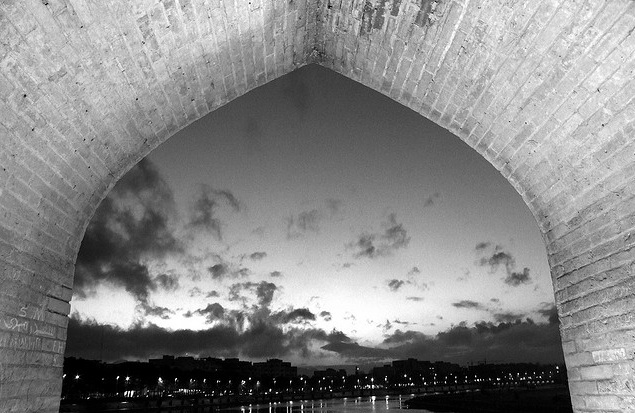
Some critics believe that the recent renovation lowers the originality of Khajoo. It is a well-known principle in the renovation techniques that it should not lead to major change in the structure and characteristics of the historic monument.
This is the point that is focused in the recent criticisms about the plan. Some stones of the structure are replaced and have been dropped into the water. This has made the depth of the water become less. The careless renovations have fatal results for Khajoo, in my opinion, which has already survived mid-nineteenth century renovations and reconstructions.
Read more on green Iran:
Iran Looks to Create Biofuel
Iran Inaugurates Its First Solar CSP Plant
Celebrate Spring and Iranian New Year
Above image via Farrokhi

